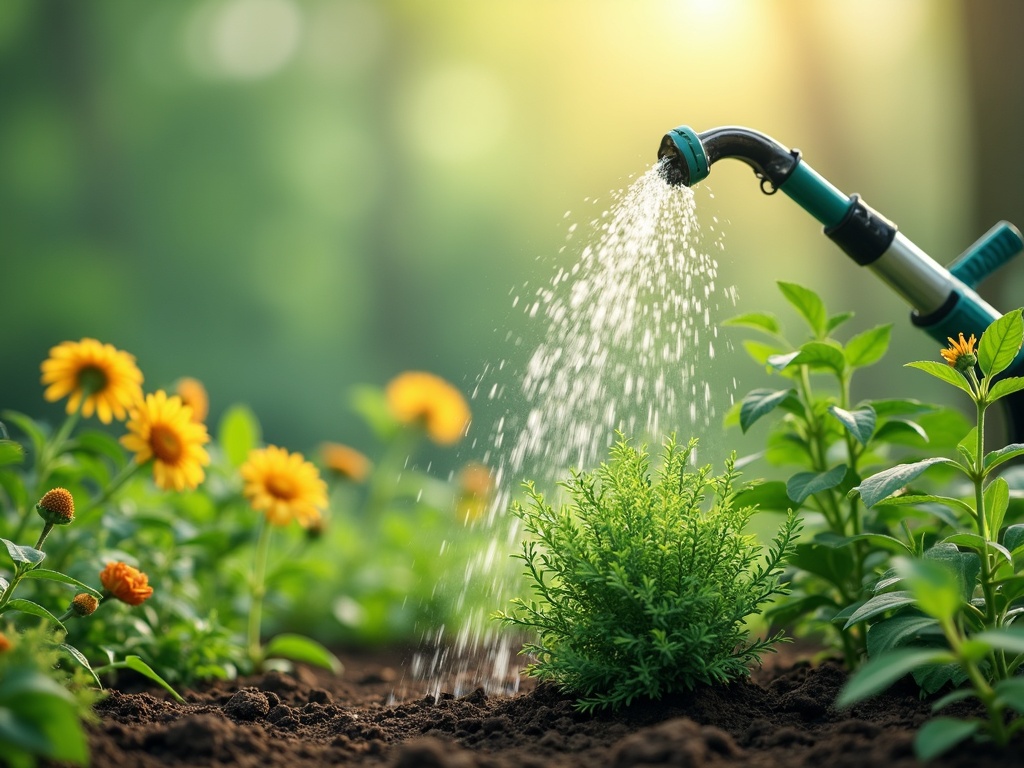Decoding Your Plants’ Distress Signals: Overwatering vs. Underwatering
A wilting plant can send shivers down a gardener’s spine. Is it thirsty? Drowning? The line between a well-hydrated plant and one suffering from over or underwatering can be surprisingly blurry. Master this crucial skill, and you’ll be well on your way to a flourishing indoor garden and vibrant outdoor beds. This guide will equip you with the knowledge to accurately diagnose your plants’ hydration woes and apply the correct remedy.
The Delicate Balance: Understanding Plant Hydration
Water is life, and that’s certainly true for our green companions. Plants need water for a multitude of essential processes: photosynthesis (creating energy from sunlight), transporting nutrients from the soil, and maintaining cell structure. However, the right *amountof water is the key. Too little, and these processes grind to a halt. Too much, and roots suffocate, leading to a cascade of other problems.
Understanding the factors that influence a plant’s water needs is the first step in preventing both overwatering and underwatering. These include:
- Plant Species: Different plants have drastically different water requirements. Succulents and cacti are adapted to arid environments and need very little water, while ferns and tropical plants thrive in consistently moist soil.
- Soil Type: Well-draining soil allows excess water to escape, reducing the risk of overwatering. Clay soils, on the other hand, retain water for longer.
- Pot Size and Material: Plants in small pots dry out faster than those in larger pots. Terracotta pots are porous and allow for better aeration and faster drying compared to plastic pots.
- Environmental Conditions: Temperature, humidity, and sunlight all play a role. Plants in hot, sunny locations will need more water than those in cool, shady spots. During their active growing season, plants generally need more water than during dormancy.
- Growth Stage: Seedlings and young plants typically need more consistent moisture than established plants.
The Case of the Soggy Soil: Recognizing Overwatering
Overwatering is one of the most common mistakes, especially among new plant parents. It’s often done with good intentions, but the results can be devastating. The primary issue isn’t just the excess water itself, but the lack of oxygen it creates in the soil.
What Happens When Roots Drown?
Plant roots need oxygen to respire and function correctly, just like we do. When the soil is constantly saturated, the air pockets are filled with water, preventing the roots from getting the oxygen they need. This leads to root rot, where the roots begin to decay and die. Once the root system becomes compromised, the plant can no longer absorb water and nutrients efficiently, leading to a slow decline.
Tell-Tale Signs of Overwatering
Detecting overwatering early can save your plant’s life. Look out for these common symptoms:
- Yellowing Leaves (Chlorosis): This often starts with the lower leaves and progresses upwards. The leaves may turn uniformly yellow or develop yellow patches with green veins.
- Drooping Leaves: While drooping can also indicate underwatering, overwatered leaves often feel soft and limp, whereas underwatered leaves tend to be dry and crisp.
- Soft, Mushy Brown Spots: These spots can appear on leaves and stems, indicating tissue decay due to fungal or bacterial infections that thrive in overly moist conditions.
- Blistered Leaves: Small, water-filled blisters may form on the leaves.
- Mold or Algae Growth on Soil Surface: This indicates that the soil is consistently damp, creating a favorable environment for these organisms.
- Foul Odor from Soil: The smell of decay is a clear sign of root rot.
- Slow Growth: Even with sufficient light and fertilizer, an overwatered plant will struggle to grow.
- Edema: This condition causes watery blisters or lesions on leaves, stems, and even fruit. It often occurs when plants take up more water than they can transpire.
How to Correct Overwatering
If you suspect your plant is overwatered, act quickly:
- Stop Watering: Allow the soil to dry out completely before watering again. Use your finger to check the soil moisture several inches below the surface.
- Improve Drainage: If the plant is in a pot, ensure it has drainage holes. You can also add perlite or sand to the soil to improve drainage.
- Repot with Fresh Soil: If root rot is suspected, gently remove the plant from its pot and inspect the roots. Cut away any mushy, brown, or black roots with clean scissors. Repot the plant in fresh, well-draining potting mix.
- Improve Air Circulation: Increase airflow around the plant by opening a window or using a fan.
- Consider Fungicide: In severe cases of root rot, a fungicide may be necessary.
The Parched Plant: Identifying Underwatering
While overwatering gets a lot of attention, underwatering is equally detrimental. Plants need water to perform basic functions, and a lack of moisture quickly leads to stress and decline.
The Impact of Dehydration
When a plant doesn’t receive enough water, its cells lose turgor pressure, which is the force that keeps them rigid. This leads to wilting, as the plant is unable to maintain its structure. Furthermore, photosynthesis slows down, nutrient transport is hampered, and the plant becomes more susceptible to pests and diseases.
Recognizing the Signs of Underwatering
Catching underwatering early is crucial for a plant’s survival. Keep an eye out for these symptoms:
- Wilting: This is the most obvious sign. The leaves and stems will droop and lose their rigidity. However, unlike overwatered leaves, underwatered leaves will often feel dry and crispy.
- Dry, Brittle Leaves: The leaves may turn brown and crispy, especially at the edges.
- Stunted Growth: The plant will stop growing or grow very slowly.
- Leaf Drop: The plant may shed leaves to conserve water. This often starts with the lower leaves.
- Dry Soil that Pulls Away from the Pot: The soil may shrink and pull away from the sides of the pot, making it difficult for water to penetrate.
- Lightweight Pot: A pot with dry soil will feel significantly lighter than a pot with moist soil.
Rescuing an Underwatered Plant
Fortunately, underwatered plants are often easier to revive than overwatered ones. Here’s what to do:
- Water Thoroughly: Slowly and deeply water the plant until water drains from the bottom of the pot. If the soil is very dry, you may need to water it in stages, allowing the soil to absorb the water gradually.
- Soak the Pot: For severely underwatered plants, you can soak the entire pot in a bucket of water for a few hours. This will ensure that the soil is thoroughly saturated.
- Increase Humidity: Increase humidity around the plant by misting it regularly, placing it on a pebble tray filled with water, or using a humidifier.
- Move to a Shadier Location: Reduce water loss by moving the plant to a cooler, shadier location.
- Check for Root Damage: In severe cases, underwatering can lead to root damage. Inspect the roots and trim away any dry or brittle portions.
Prevention is Key: Establishing a Proper Watering Routine
The best way to avoid the problems of overwatering and underwatering is to establish a consistent watering routine tailored to your specific plants and environment. Here are some tips:
- Research Your Plants: Learn about the specific water needs of each plant in your collection.
- Check Soil Moisture Regularly: Don’t rely on a fixed watering schedule. Instead, check the soil moisture before each watering. Use your finger, a moisture meter, or a wooden stick to assess the soil’s dampness.
- Water Deeply and Less Frequently: When you water, water thoroughly until water drains from the bottom of the pot. This encourages deep root growth, making the plant more resilient to drought. Allow the soil to dry out slightly between waterings.
- Use Well-Draining Soil: Choose a potting mix that drains well and provides adequate aeration to the roots.
- Consider the Season: Adjust your watering routine based on the season. Plants generally need less water during the dormant winter months.
- Observe Your Plants: Pay close attention to your plants’ overall health and appearance. Look for early signs of stress, and adjust your watering accordingly.
- Use Self-Watering Solutions: For plants with difficulty maintaining constant moisture, consider self-watering planters or watering globes.
Decoding the Language of Leaves: A Final Thought
Learning to differentiate between the signs of overwatering and underwatering is a fundamental skill for any plant enthusiast. By understanding the delicate balance of hydration and paying close attention to your plants’ signals, you can create a thriving environment where they can flourish. So, get your hands dirty, observe closely, and remember that every wilt or yellow leaf is an opportunity to learn and become a better plant parent. Happy gardening!

